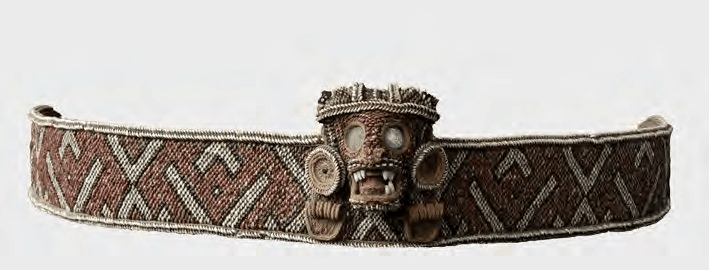The collaboration of Julian Granberry and Gary Vescelius produced a short but very readable analysis of the languages of the precolonial Caribbean. Determined to see how linguistic evidence can be of assistance with tracking external and internal migration in the archipelago based on archaeological and ethnohistoric evidence, Languages of the Pre-Columbian Antilles proposes a few general theories. First, that the earliest Archaic population in the Antilles came from Central America, possibly speaking a Tolan language. A possible remnant of this ancient language presence might be attested in Hispaniola among the Ciguayo, whose word for gold, tuob, indicates a possible connection with that language family. Quisqueya, one of the indigenous names of the island of Haiti may also shouw a connection to Eastern Tol languages of Honduras. Of course, we lack enough words from the language spoken by the Ciguayo of Hispaniola to actually know for sure. But it's an interesting idea, considering the archaeological evidence of a movement of Central Americans from the area of Belize/Honduras into the West Indies in prehistoric times. Granberry and Vescelius also propose a movement of a population speaking a language related to Warao, a language isolate of Venezuela. This movement happened after the movement of Central Americas into the Antilles, and may have survived in the Macorix language, still spoken in parts of Hispaniola when the Spanish arrived (although not restricted to only Hispaniola).
The authors then propose the movement of Arawakan speakers after this period, who spoke a language from the Northwest branch of Maipuran languages, closer to Goajiro than, say, Lokono and the Northeast branch. Over time, the expansion of Arawakan speakers into the Greater Antilles and Lesser Antilles led to the replacement of the Warao-like language or a new, creolized form of the Arawakan tongue, which became the Taino language. Evidence for a pre-Taino Warao-related language is also lacking enough evidence to support, but words like duho or duhu in Taino appear to be derived from the Warao word for stools or sitting. Similarly, the word for gold, nozay, in the Lucayan Islands may be related to the Modern Warao term for gold. According to Granberry, this Warao-influenced Arawakan language was the "Ciboney" tongue used in Cuba, western Hispaniola, probably Jamaica and the Lucayan islands. The language we call Classic Taino, however, was the universal tongue and appears to have been in a process of expansion into Cuba right before the Spanish conquest. As for the Guanahatabey of Cuba, Granberry and Vescelius accept the theory of their Archaic origins, which implies they may have spoken one of the pre-Arawak languages of the Antilles.
Trying to connect language shifts with ceramic styles and lithics can be fraught with danger. Sometimes languages spread or change without necessarily correlating with ceramic styles or other aspects of material culture. In that regard, we are unsure how to interpret the theory of a Meillacoid ceramics style and Chican being signs of distinct languages. In addition, we wonder about the power of Xaragua in western Hispaniola, which was considered by Las Casas to have spoken the most refined form of the universal language of the island. If that language was Taino, and they spoke the most refined form of it while also being considered the most powerful cacicazgo of the island, does that not imply a strong or influential Classic Taino influence in the western parts of Hispaniola? Nevertheless, Granberry and Vescelius's study, despite its very limited data to support their ideas of Tolan and Warao-like languages in the ancient Great Antilles, raise a number of interesting insights. For instance, using toponyms to postulate where the first inhabitants of the Lucayans came from (Cuba and Hispaniola) is an interesting idea that can be supported with archaeological evidence. Furthermore, the adoption of the Warao duhu for what is one of the most important signs of chiefly power and ceremonial uses in Taino civilization is certainly interesting, even if no other Taino words related to chiefly power or spirituality have a link to Warao.
Likewise, the fact that Eyeri or Lesser Antilles Arawakan language was closer to Northeast Arawakan languages on the South American mainland, a pattern still evident in the Garifuna language which descends from, illustrates the huge linguistic diversity in the precolonial period. A few other instances of specific words that do not demonstrate clear Arawak affinities or archival sources might have further strengthened some of the ideas proposed by the authors. For example, Oviedo's reference to the use of the word "eracra" for bohio or house by the Indians of the island of Haiti should have been examined to see if it shows any similarities with Warao or Central American tongues. And the explanation of the prefix maku and the definition of Macorix or Macorix could have been expanded upon for understanding references to "Macurijes" in other parts of the Great Antilles, such as Cuba. If Macurijes in Cuba during the second half of the 16th century did not speak Taino, was it a Warao language? Or were they speaking what the authorss considered "Ciboney" instead? It is difficult to know, although the idea of Macorix implying a non-Arawakan language is an interesting one. It might be worthwhile to also look into languages in Florida the coast of Panama and Colombia for possible connections with other cultures the Greater Antilles peoples were in contact with.

No comments:
Post a Comment